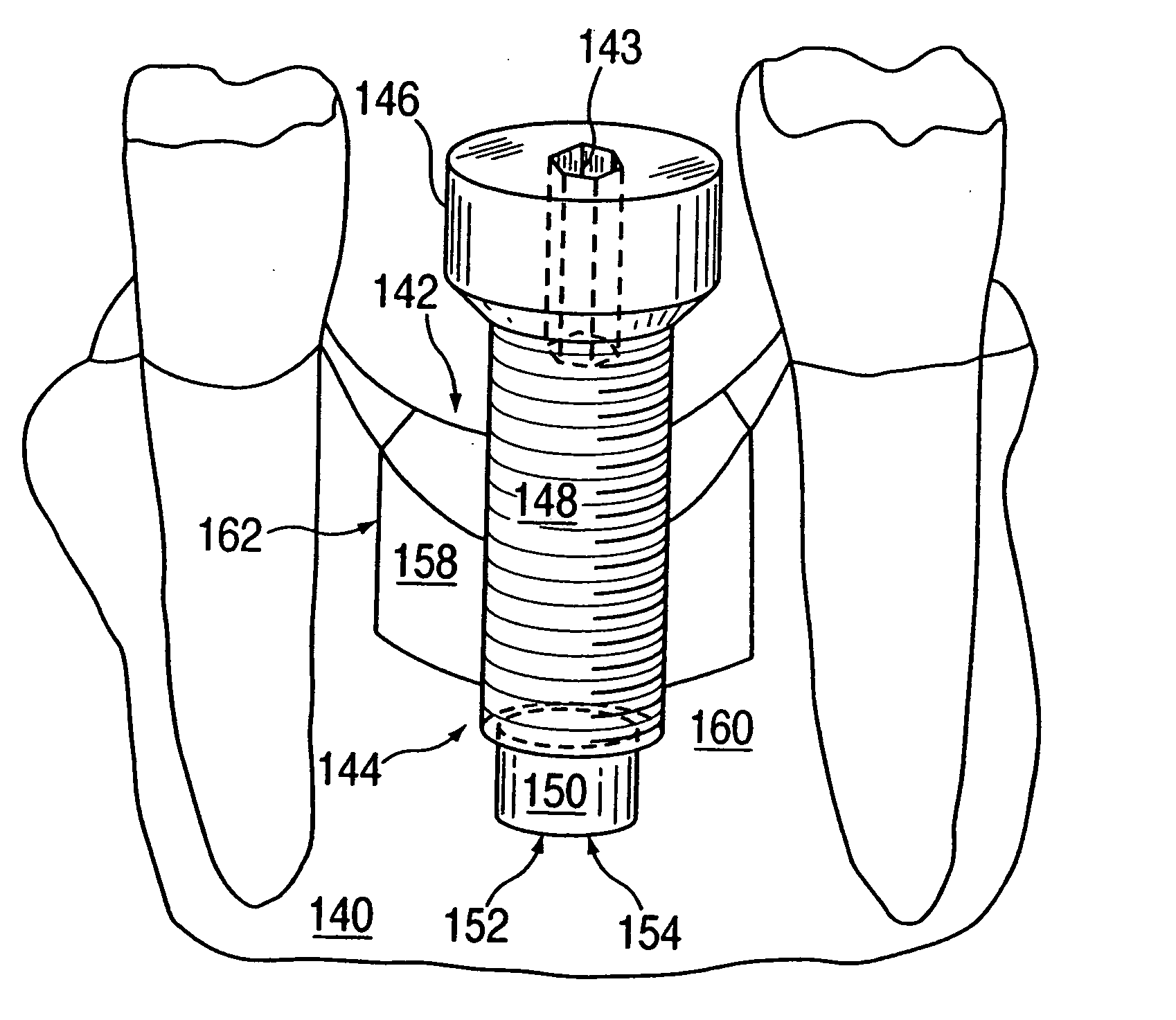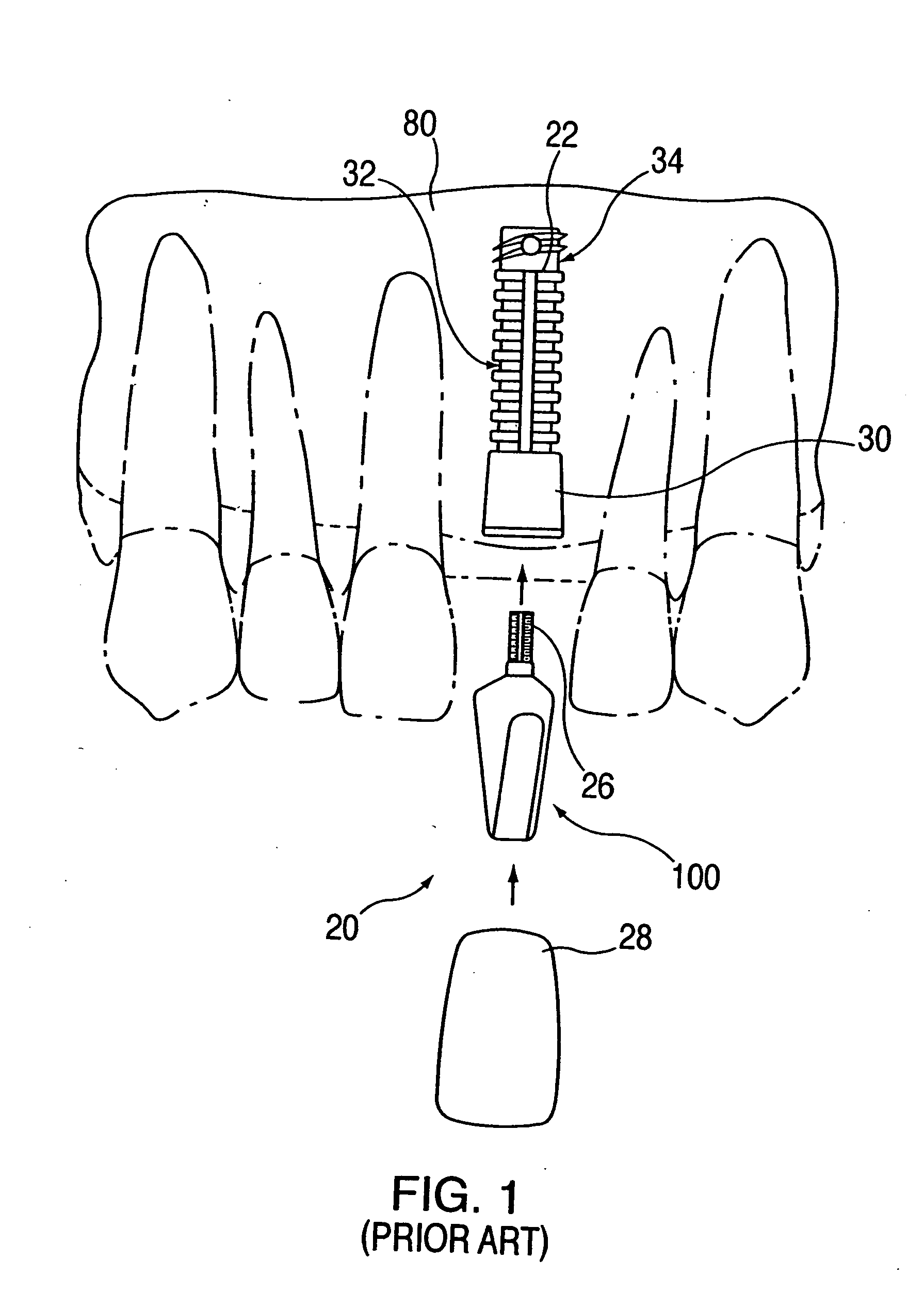Combination distraction dental implant and method of use
- Summary
- Abstract
- Description
- Claims
- Application Information
AI Technical Summary
Benefits of technology
Problems solved by technology
Method used
Image
Examples
Embodiment Construction
[0067] The science and technology of dental implants have been described above. As such, dental implants have evolved from a simple cylindrical form to now having external threads, self tapping grooves, vertical grooves, vents, apical holes and treads, and surface coatings / treatments (titanium plasma spray, acid-etch, hydroxylapatite, microspheres, sintered pores, bone promoting substances, selective surface combinations), etc., all of which act to serve as mechanisms to facilitate placement and promote bone healing, thus increasing retention of the implant within the bone. As is known, dental implants can be made of various grades of titanium (Grade I-IV) to increase the strength of the implant itself. Implants may also be stepped or tapered apically, allowing for placement into narrow anatomical spaces. Implants may have a smooth collar to provide for cervical healing. Implants may have external or internal hexagonal, octagonal, spline and other designs to allow for increased rete...
PUM
 Login to View More
Login to View More Abstract
Description
Claims
Application Information
 Login to View More
Login to View More - R&D
- Intellectual Property
- Life Sciences
- Materials
- Tech Scout
- Unparalleled Data Quality
- Higher Quality Content
- 60% Fewer Hallucinations
Browse by: Latest US Patents, China's latest patents, Technical Efficacy Thesaurus, Application Domain, Technology Topic, Popular Technical Reports.
© 2025 PatSnap. All rights reserved.Legal|Privacy policy|Modern Slavery Act Transparency Statement|Sitemap|About US| Contact US: help@patsnap.com



